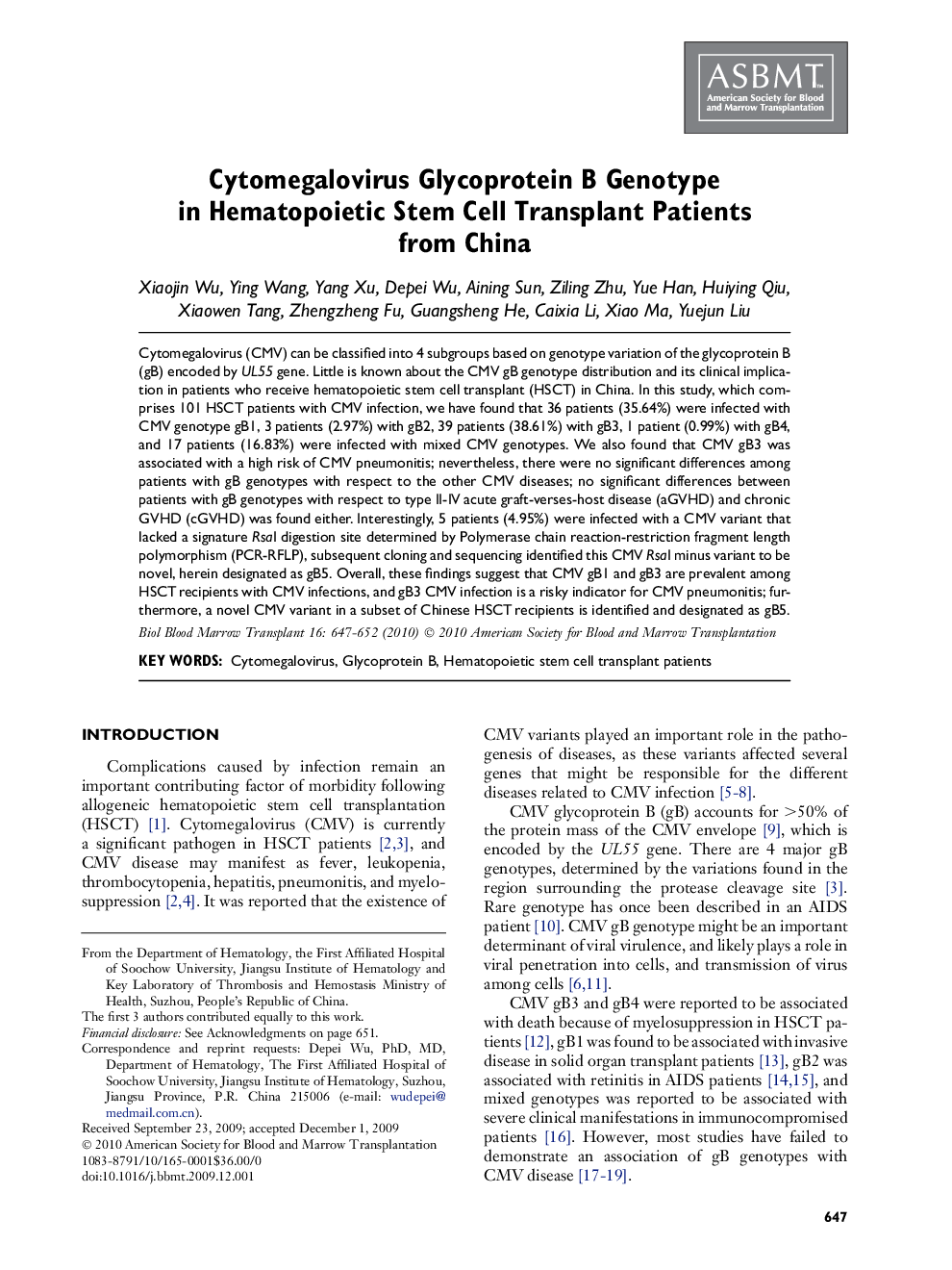| Article ID | Journal | Published Year | Pages | File Type |
|---|---|---|---|---|
| 2103990 | Biology of Blood and Marrow Transplantation | 2010 | 6 Pages |
Cytomegalovirus (CMV) can be classified into 4 subgroups based on genotype variation of the glycoprotein B (gB) encoded by UL55 gene. Little is known about the CMV gB genotype distribution and its clinical implication in patients who receive hematopoietic stem cell transplant (HSCT) in China. In this study, which comprises 101 HSCT patients with CMV infection, we have found that 36 patients (35.64%) were infected with CMV genotype gB1, 3 patients (2.97%) with gB2, 39 patients (38.61%) with gB3, 1 patient (0.99%) with gB4, and 17 patients (16.83%) were infected with mixed CMV genotypes. We also found that CMV gB3 was associated with a high risk of CMV pneumonitis; nevertheless, there were no significant differences among patients with gB genotypes with respect to the other CMV diseases; no significant differences between patients with gB genotypes with respect to type II-IV acute graft-verses-host disease (aGVHD) and chronic GVHD (cGVHD) was found either. Interestingly, 5 patients (4.95%) were infected with a CMV variant that lacked a signature RsaI digestion site determined by Polymerase chain reaction-restriction fragment length polymorphism (PCR-RFLP), subsequent cloning and sequencing identified this CMV RsaI minus variant to be novel, herein designated as gB5. Overall, these findings suggest that CMV gB1 and gB3 are prevalent among HSCT recipients with CMV infections, and gB3 CMV infection is a risky indicator for CMV pneumonitis; furthermore, a novel CMV variant in a subset of Chinese HSCT recipients is identified and designated as gB5.
